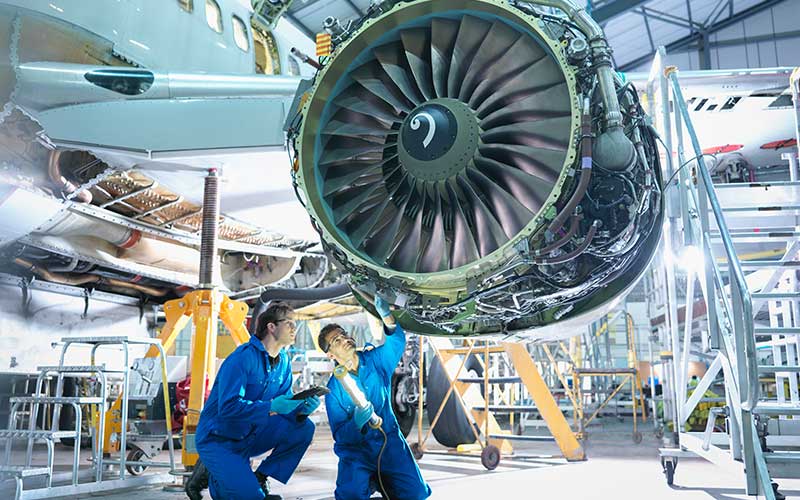Defence and aerospace manufacturing represents a unique, high-stakes sector of global manufacturing, driven by the need for advanced technology, stringent safety standards, and rapid adaptation to geopolitical demands. From aircraft production and military vehicles to space technology and defence systems, these industries are at the forefront of engineering and innovation.
1. The Strategic Role of Defence and Aerospace Manufacturing
A. National Security and Economic Growth
Manufacturing in the defence and aerospace sectors is central to a nation’s security. By producing technologically advanced equipment, these industries bolster national defence capabilities and reduce reliance on foreign suppliers, which is particularly important in times of political tension. Additionally, this sector generates substantial economic growth through job creation, exports, and R&D investments.
B. Technological Advancement
Defence and aerospace manufacturers drive innovation in fields such as propulsion, artificial intelligence (AI), and avionics. These technologies often find applications in civil sectors, from automotive industries to healthcare, showcasing how defence R&D impacts daily life.
C. Global Partnerships and Alliances
Many defence manufacturers partner with governments, global alliances, and foreign companies to develop new technologies and facilitate export agreements. These partnerships not only ensure advanced defence equipment for all parties but also foster diplomatic ties and economic collaboration across borders.
2. Key Segments in Defence and Aerospace Manufacturing
A. Aerospace Manufacturing
Aerospace manufacturing is essential for both civil and military aviation, involving the production of aircraft, spacecraft, and satellites. This segment includes several subfields:
- Commercial Aviation: Involves manufacturing passenger aircraft, often requiring extensive research into fuel efficiency, aerodynamics, and passenger comfort.
- Military Aviation: Focuses on producing fighter jets, transport planes, and surveillance drones, with a priority on precision, durability, and mission-specific technology.
- Spacecraft and Satellites: This cutting-edge field supports exploration, global positioning, and satellite communication systems, essential for navigation, weather forecasting, and telecommunications.
B. Defence Systems and Armaments
Defence manufacturing produces a range of military equipment, from small arms and missile systems to large-scale naval vessels and land-based vehicles. This segment often involves:
- Armored Vehicles: Built for ground combat, these vehicles require robust, impact-resistant materials and innovative designs to withstand various terrains and environments.
- Naval Systems: Shipbuilding for defence encompasses submarines, aircraft carriers, and patrol vessels, each designed for longevity and mission resilience.
- Missile Systems and Ballistics: Complex manufacturing processes and high-level engineering go into creating guided missiles, rockets, and other ballistic systems that are essential for modern warfare.
C. Cybersecurity and Digital Warfare Solutions
With the growing threat of cyberattacks, defence manufacturing increasingly involves developing digital security systems to protect classified data, critical infrastructure, and military operations. These cybersecurity solutions support resilient networks that can defend against adversaries.
3. Leading Technologies Driving Defence and Aerospace Manufacturing
A. Unmanned Aerial Vehicles (UAVs)
UAVs, or drones, are a fast-evolving sector in defence and aerospace manufacturing. They are used for surveillance, reconnaissance, and combat operations, providing real-time data and reducing human risk in hostile environments.
B. Hypersonic Technology
Hypersonic technology enables vehicles to travel at speeds exceeding Mach 5, offering unparalleled speed and evasion capabilities. This is critical for both military applications and future space exploration missions.
C. Artificial Intelligence and Machine Learning
AI and machine learning enhance the autonomy of systems, allowing for rapid decision-making and data analysis. From AI-guided drones to autonomous submarines, AI technology enables greater efficiency, safety, and operational effectiveness.
D. Composite Materials and Additive Manufacturing
Innovations in lightweight, durable materials, such as carbon-fiber composites, enhance the structural integrity and fuel efficiency of vehicles. Additionally, additive manufacturing (3D printing) allows for rapid prototyping, reducing production costs and time-to-market for essential components.
E. Cyber Defence Systems
Modern warfare increasingly includes a digital component, making cybersecurity solutions critical for military applications. Defence manufacturers invest in advanced systems that protect against cyber threats, safeguarding communications, data, and automated processes.
4. Major Defence and Aerospace Manufacturers
A. Lockheed Martin
Known for its work in defence technology, Lockheed Martin is a leader in aircraft, missile systems, and cybersecurity solutions. The company develops advanced fighter jets and missile defence systems and has contributed to significant space exploration projects.
B. Boeing
Boeing’s aerospace and defence division manufactures everything from commercial jets to military helicopters, satellites, and space vehicles. The company is also involved in numerous global defence contracts and research projects.
C. Northrop Grumman
Northrop Grumman is a major supplier of defence electronics, including radar and sensor systems, and cybersecurity solutions. Its work in autonomous technology and space exploration solidifies its role as an industry innovator.
D. Hindustan Aeronautics Limited (HAL)
An Indian aerospace and defence company, HAL plays a vital role in indigenous aircraft manufacturing and has produced fighter jets, helicopters, and transport aircraft for the Indian Armed Forces.
5. Challenges Facing Defence and Aerospace Manufacturing
A. Supply Chain Vulnerabilities
Global supply chains are increasingly complex and, as a result, vulnerable to disruptions. Defence and aerospace manufacturers are often reliant on rare materials and specialized components, making consistent access challenging.
B. Regulatory Compliance and Export Controls
Strict regulations govern defence exports and technology transfers. Compliance with international treaties and national laws can delay projects and limit export opportunities for manufacturers.
C. Technological Obsolescence
Defence and aerospace technology evolves rapidly, often outpacing the traditional manufacturing cycle. Companies must continually innovate to avoid obsolescence and remain competitive in the market.
D. Skilled Workforce Shortages
The sector requires highly trained engineers, scientists, and technicians. Recruiting and retaining skilled professionals is essential, especially as companies compete with the private tech sector for top talent.
6. Future of Defence and Aerospace Manufacturing
A. Space Commercialization and Collaboration
Space technology is moving towards commercialization, with private companies participating in space missions. Partnerships between private firms and national space agencies are driving innovation in satellite production, space exploration, and tourism.
B. Renewable and Green Technologies
Environmental sustainability is a growing focus in defence and aerospace. Companies are exploring biofuels, electric propulsion, and emissions-reduction technology to make their operations more eco-friendly.
C. Autonomous Defence Systems
The use of autonomous systems in defence is set to expand, reducing human risk and increasing operational efficiency. From self-guided missiles to AI-controlled drones, autonomy is becoming integral to modern defence strategies.
D. Integrated Cybersecurity
As the battlefield becomes more digitized, cybersecurity is critical. Companies are integrating cybersecurity solutions into every aspect of defence technology, ensuring that systems are protected from potential breaches.
Conclusion
Defence and aerospace manufacturing is an essential industry, combining engineering excellence, innovation, and resilience. These manufacturers deliver critical products and technology that enhance global security, foster technological breakthroughs, and drive economic growth. As technology advances, this sector will continue to evolve, addressing challenges while exploring new opportunities for defence, space exploration, and beyond.




